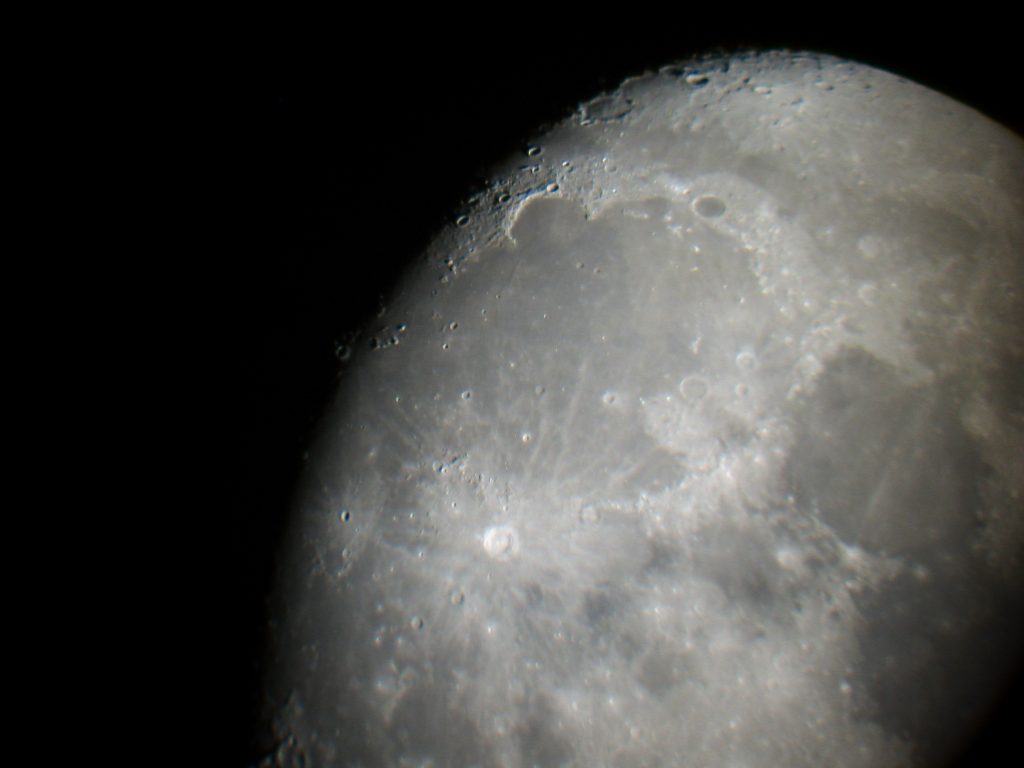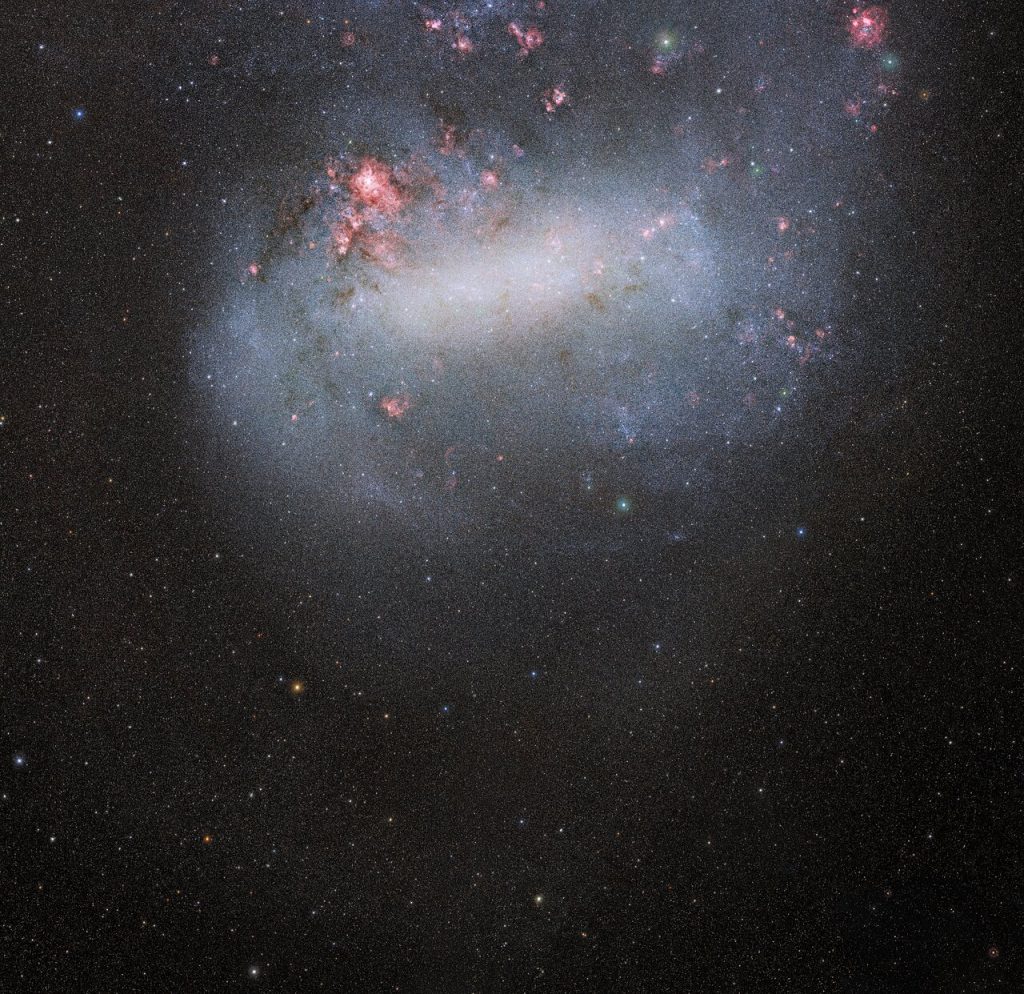Media
Summary
The Dark Energy Camera captures SMASHingly detailed images of the Large and Small Magellanic Clouds, assisting in an attempt to map the two structures and understand their history. Plus formation of the Moon, a new atlas of the Universe, and an interview with PSI scientist Dr. Jordan Steckloff.
Transcript
This is the Daily Space for today, Thursday, December 3, 2020. I am your host, Dr. Pamela Gay.
And I am your host, Beth Johnson.
And we are here to put science in your brain.
Today we will be joined by Dr. Jordan Steckloff to discuss a news story we discussed last Friday: The orbital evolution of a new comet that will be heading into the inner solar system in the next several decades. Before we get to that interview, however, let’s take a look at the news.
Our first news item comes to us from the Australian Square Kilometre Array Pathfinder or ASKAP. This new facility has imaged 83 percent of the visible sky, and in just 300 hours was able to map approximately three million galaxies in long radio wavelengths. This was possible thanks to a combination of a large field of view and innovative radio receivers. At this point, this isn’t a story with great scientific results; this is a story of a great data set and a successfully launched new telescope array. This new data set demonstrates that ASKAP will be able to image the entire visible sky in radio-wavelengths in weeks rather than years.

And the data that is being obtained is huge. Raw off the telescopes, this new survey generated 13.5 exabytes. Once processed, it transformed into 70 billion pixels, 903 images, and 26 terabytes of data containing an estimated one million previously unknown galaxies. This entire data set will be made publicly available through the CSIRO Data Access Portal, and in the coming years, I expect to see an onslaught of research papers that allow us to understand the evolution of the universe and its large scale structure of galaxies like never before.
What is particularly exciting to me is that we are now a few years away from having both radio and optical telescopes that are able to rapidly map the entire sky every few nights. The Vera Rubin Observatory and its LSST telescope are delayed by COVID-19 but near completion. Together, these two survey systems will have the ability to reveal the moment-to-moment, amazing changes of our sky in new ways, and I suspect that no one has guessed what amazing new things will be in that data.
All right, I need 60 Terabytes of hard drive space; it’s time to go play with data.
There are basically three ways to do observational science. You can survey, as Pamela discussed, you can do targeted observations of specific objects of interest, which we’ll cover in our next story, or you can dig through the existing data to see what can be found, lurking unnoticed, in all the exabytes already out there.
For one intern at the Johns Hopkins Applied Physics Lab, an exploration of archival data of the Moon’s Imbrium Basin led to the remarkable discovery of rocks on this volcanic plain that are made of minerals that may have been lifted up from the Lunar mantle.

Over the decades, we have painted a picture of a forming moon with low-density plagioclase floating to the lunar surface while higher density olivine and orthopyroxene should populate the lunar mantle. Lunar rocks returned to Earth by the Apollo and Luna programs were able to demonstrate that plagioclase does indeed dominate the surface, but none of the samples found evidence of the magmatic mantle. Since all of our theories on rocky planet formation have been based on a Lunar Magma Ocean model, this missing piece of the puzzle was frustrating to planetary scientists.
The now-former intern, Jordan Bretzfelder, is the first author of a new paper published in the journal Geophysical Research Letters that lays out her study of the Imbrium Basin. She used two different kinds of data to look for rocks that may have been brought to the lunar surface from the mantle during past lava flows, and she was able to identify two regions with large pieces of crustal material surrounded by those mantle-making orthopyroxene-rich materials.
According to co-author Rachel Klima: Our understanding of all planetary evolution of solid planets builds on the Lunar Magma Ocean model, which was created based on the analysis of returned lunar samples. This is the first time we have found something that could be mantle, a large area measuring multiple-scale blocks, rather than microscopic pieces.
Here is to hoping that in the not-too-distant future a new mission will be able to go gather some of these chemically interesting rocks.
In our final story of the day, we’re taking a deeper look at the Milky Way’s nearest neighbors of notable size: the Large and Small Magellanic Clouds. These two irregular galaxies are currently flying past our own galaxy and interacting with it gravitationally. Their location makes them prime targets for exploration, and a team using the Dark Energy Camera (DECam) has released amazing new data on these systems. The DECam is on the four-meter Blanco telescope at Cerro Tololo Inter-American Observatory (CTIO) in Chile. Over fifty nights, a large team of astronomers obtained about 2400 square degrees of data that map both galaxies and their surroundings and are sensitive to objects as faint as around 24th magnitude in five colors.

This data will be used to understand the stellar populations of these galaxies. This scientific purpose contributed to one of the more amusing acronyms of the year: SMASH, which stands for the Survey of Magellanic Stellar History, where both the M and A at the beginning of Magellanic are included in this smashing acronym.
According to Glen Langston, the National Science Foundation (NSF) program officer behind this survey: These are beautiful multicolor images of the Milky Way’s nearest neighboring galaxies. Through the care the dedicated team has taken, they give us a remarkable view of the thirteen billion year history of star formation in these galaxies.
Project co-lead Knut Olsen goes on to add: Besides producing amazing images, these data allow us to look into the past and reconstruct how the Magellanic Clouds formed their stars over time; with these ‘movies’ of star formation we can try to understand how and why these galaxies evolved.
Again, this is a data release paper, and I can’t wait to see the science that will be coming in the future.
And now, please welcome Planetary Science Institute Research Scientist Jordan Steckloff. Dr. Steckloff, thank you for joining us today.
[Interview]
This has been the Daily Space.
Learn More
Australian Telescope Creates a New Atlas of the Universe
- CSIRO press release
- “The Rapid ASKAP Continuum Survey I: Design and First Results,” D. McConnell et al., 2020 Nov. 30, Publications of the Astronomical Society of Australia
Rocky Discovery Could Offer Clues to Moon’s Formation
- JHUAPL press release
- “Identification of Potential Mantle Rocks Around the Lunar Imbrium Basin,” Jordan M. Bretzfelder et al., 2020 Oct. 29, Geophysical Research Letters
Dark Energy Camera Snaps Deepest Photo Yet of Galactic Siblings
- NOIRLab press release
- “The Second Data Release of the Survey of the MAgellanic Stellar History (SMASH),” David L. Nidever, Knut Olsen, et al., 2020, Astronomical Journal (preprint on arxiv.org)
Comet 2019 LD2 (ATLAS) Found to Be Actively Transitioning
- PSI press release
- NY Times article
- “P/2019 LD2 (ATLAS): An Active Centaur in Imminent Transition to the Jupiter
Family,” Jordan Steckloff et al., 2020 Nov. 26, Astrophysical Journal
Letters (preprint on arxiv.org)
Credits
Written by Pamela Gay and Beth Johnson
Hosted by Pamela Gay and Beth Johnson
Audio and Video Editing by Ally Pelphrey
Content Editing by Beth Johnson
Intro and Outro music by Kevin MacLeod, https://incompetech.com/music/


 We record most shows live, on Twitch. Follow us today to get alerts when we go live.
We record most shows live, on Twitch. Follow us today to get alerts when we go live.